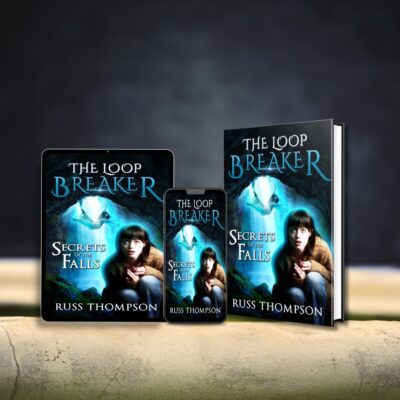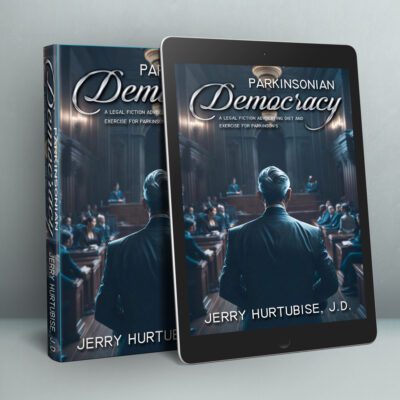There’s an old line about stories that’s been attributed to many great writers (Leo Tolstoy, anyone?), but really only got started with educator John Gardner when he wrote, “As subject, use either a trip or the arrival of a stranger (some disruption of order—the usual novel beginning).”
Sounds simple, right? By ‘subject,’ Gardner means ‘plot,’ and by ‘some disruption of order,’ he’s saying that either a stranger will come to town, or a local will leave town. Start your plot with either/or, and you’ll have the quiet beginnings of a story in your hands.
As a writer, you can’t help but scoff and say, “That’s not the only way to start a plot.”
Well, according to Christopher Booker and his book, The Seven Basic Plots: Why We Tell Stories, you might just be onto something there.
Like his book title might suggest, Booker believed that there were seven ready-made plots to pluck from — not two — that a writer could pin down and use as a platform for their novel. He named his seven plotlines as follows:
- The Quest
- Rags to Riches
- Voyage and Return
- Overcoming the Monster
- Tragedy
- Comedy
- Rebirth
In this post, we will look at three: The Quest, Rags to Riches and Voyage and Return.
You probably recognize some of them. The Quest, for example, is also commonly referred to as “The Hero’s Journey,” and always plays out just like it sounds. The “hero” (your protagonist) will usually run into a series of obstacles and other characters that will only push them toward their inevitable victory (hence the presumptuous title of hero). This is the most common plot of our age; one that you’ve no doubt seen played out within popular book series multiple times like Harry Potter, Percy Jackson, The Lord of the Rings, Song of the Lioness, and many more.
It’s still a brilliant plot to follow if you’ve got a character that has places to be and people to kill. In fact, blogger Glen C. Strathy has broken this one-fit-all plot down into four scenes for you to apply to your own story.
The Quest
1. The Call
This is the pull of an outside force that is beckoning your hero to come get involved and, usually, save the day. Perhaps the most literal example of this is the call of Bilbo Baggins of Bag End, when he was so famously asked by an old wizard to “share in an adventure.” Basically, this will get your character out the door and into the open arms of his impending quest.
2. The Journey
The moment home is safely behind your hero, they have started their journey. This scene will steal the spotlight for the majority of the story, for it covers everything from your hero’s smaller skirmishes along the way to their allies and foes that they might meet. This is the time to really show your reader just who your protagonist is — what they’re fighting for, and what they’re scared of losing. And — not to mention — why your reader should even care.
In short, make the reader fall in love with them.
3. The Obstacle, and Overcoming
When eleven-year-old Harry Potter entered the final task and faced Professor Quirrell standing in front of the Mirror of Erised? That was where The Boy Who Lived had his journey stop short, and suddenly twist into the final obstacle of his quest.
That is the moment your reader has been waiting for. Everything had led to it — from every piece of odd advice to every useless weapon that your hero couldn’t be bothered to throw away — every loose end will finally make sense as all is revealed in this dramatic scene.
4. The Goal
While you might be ready to call it a night, your reader has just experienced the final heart-pounding obstacle with your hero, and they are in very much need of some last-minute coddling to wind them down. Don’t be afraid to throw them a bone: maybe elaborate on the hero’s happily ever after with their prince/princess, or mention just how many barrels of gold the hero sends home to his fearful mother. It doesn’t really matter what, just make sure it’s something that the reader will be interested to know and happy to be privy to.
Another plot Strathy mentions that is very similar to The Quest is the Rags to Riches story. This story will start out with another call, but not in the same grand manner that we may have witnessed in The Quest.
Rags to Riches
1. The Call
This hero might not end up facing dragons or a dark wizard, but they are about to be called onto a path full of self-discovery and inner demons.
The simplest way to explain this story would be through the age-old fairy tale of Cinderella. At the beginning, we meet Ella, a young girl who has been turned into a slave by her step sisters and even renamed “Cinder-Ella” because she is forced to sleep in the fireplace. Poor old Cindy just can’t catch a break — that is, until an invitation ordering every eligible lady to attend a midnight ball arrives from the palace.
2. Success
Cinderella gets her first night out in — well, forever — and enjoys her night of luxury up at the palace. This is her first taste of the ‘riches’ about to come her way: a ballroom dress, a busy dancefloor that she doesn’t even have to think about mopping, and all the imported sweets that a royal can buy. Life is good, and it isn’t very long before a certain bachelor takes her by the hand and leads her in a dance.
3. Crisis
All too soon the clock strikes midnight, and Cinderella’s night out turns into vivid memory that she just can’t quite seem to convince herself was real. Now, add that to the fact that her stepmother has turned absolutely hellish ever since her own daughter’s unsuccessful return home without even a Duke’s proposal, and you’ve got a Cinderella in crisis.
4. Independence
Cinderella finally reaches independence from her (step) family when the prince finds her via shoe size. It’s in this scene that Ella finally stands up for herself and admits that she was the girl the prince danced with, which immediately sends her into one of the most coveted happily ever after’s of all time.
It is worth mentioning, however, that not all Rags to Riches stories go right.
Take The Great Gatsby, for example. Author F. Scott Fitzgerald wrote the tragedy of Jay Gatsby almost ninety years ago, and the terrible tale of the unhappy boy turned lonely millionaire turned corpse is a classic case of what can happen when a Rags to Riches hero gains outward independence, but not internal freedom.
Sadly, this emotional unrest is not limited within the Rags to Riches plot, and frequently pops up in the Voyage and Return as well.
Voyage and Return
1. Open to Opportunity
There is no “call” in this story; rather, the hero is usually a curious or even reckless character who doesn’t need an outside push to take a leap. Daniel Defoe’s Robinson Crusoe is a grand example of this, especially since Crusoe isn’t really anything other than bored. The son of a well-off family (think middle class), he’s so tired of his dull lot in life that he decides to risk it all by taking to the open sea. Do his parents approve? No. Does he care? Well, he wouldn’t be a Voyage and Return protagonist if he did.
2. Experience and Explore
This scene marks the honeymoon phase for the hero. He’s just jumped into a new world of unknown wonder and exciting new experiences, and it’s with naive eyes that he takes it all in. Unfortunately, this is a character who just left a cushy life out of pure boredom, so it isn’t much of a surprise when Crusoe decides that he can’t be satisfied with just one (or two, or three) life-changing trips across the sea.
3. Frustration
Eventually, Crusoe’s luck catches up with him, and after escaping slavery he eventually becomes shipwrecked upon his infamous island. Suddenly, he hates himself for disobeying his parents and ever taking to a life at sea, but most of all for not being happy with his initial lot in life. He’s angry at the world, and the decisions he so carelessly made leading up to his crash.
4. Nightmare
Just when a hero thinks it can’t get any worse, it does. For Crusoe, that means discovering that cannibals share his island, and that he could very well be their next meal.
This is the scene where the hero will be pushed to his already exhausted limits. It’s the moment to face down his demons, internal or otherwise, and finally prove his worth to himself. Crusoe himself finally faces off against the cannibals, frees a Spaniard who grants him passage back to the civilized world, and settles back into the town where he grew up with an inner peace never experienced before.
These are just three of the seven basic plots that Booker mentions, so if your own story doesn’t quite fit into any of those mentioned above, don’t fret. Next week we’ll go over the next three, and likely cover your plot with Overcoming the Monster, Tragedy, and Comedy. Of course, the seventh, Rebirth, will be given special attention in a separate post soon after.
Happy Labor Day and happy writing!







